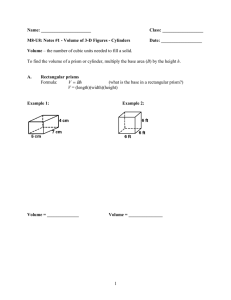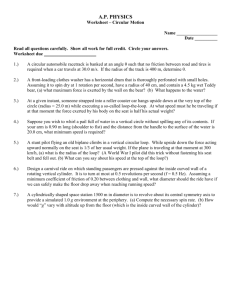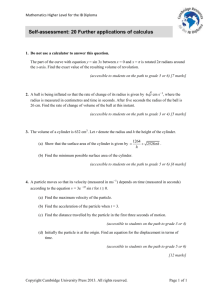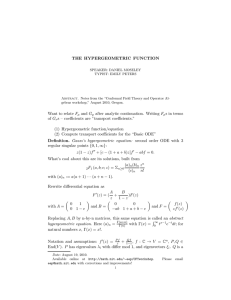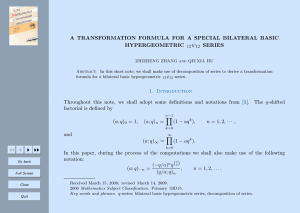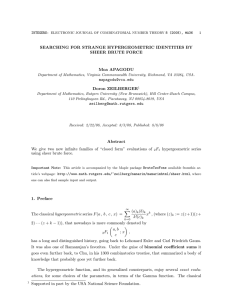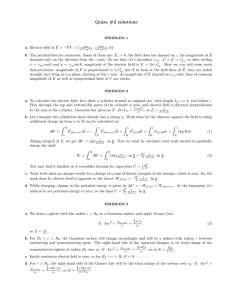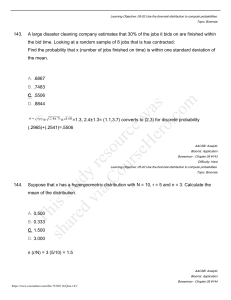Engineering Mathematics II Honors Sections 819–820
advertisement
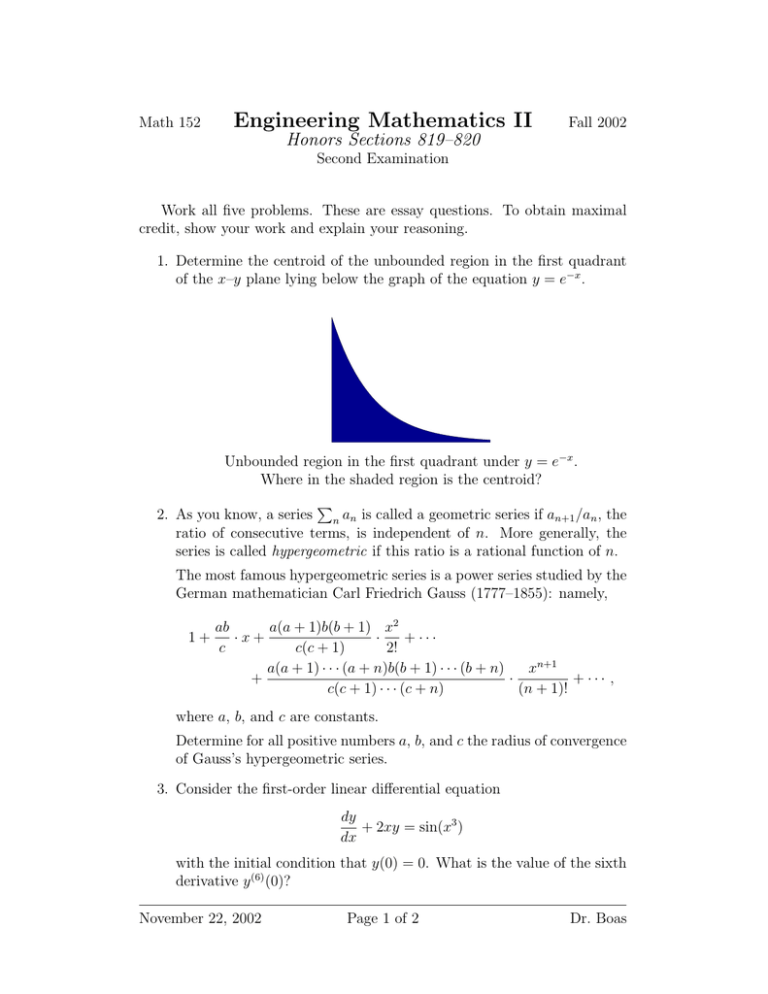
Math 152 Engineering Mathematics II Honors Sections 819–820 Fall 2002 Second Examination Work all five problems. These are essay questions. To obtain maximal credit, show your work and explain your reasoning. 1. Determine the centroid of the unbounded region in the first quadrant of the x–y plane lying below the graph of the equation y = e−x . Unbounded region in the first quadrant under y = e−x . Where in the shaded region is the centroid? P 2. As you know, a series n an is called a geometric series if an+1 /an , the ratio of consecutive terms, is independent of n. More generally, the series is called hypergeometric if this ratio is a rational function of n. The most famous hypergeometric series is a power series studied by the German mathematician Carl Friedrich Gauss (1777–1855): namely, 1+ a(a + 1)b(b + 1) x2 ab ·x+ · + ··· c c(c + 1) 2! a(a + 1) · · · (a + n)b(b + 1) · · · (b + n) xn+1 + · + ··· , c(c + 1) · · · (c + n) (n + 1)! where a, b, and c are constants. Determine for all positive numbers a, b, and c the radius of convergence of Gauss’s hypergeometric series. 3. Consider the first-order linear differential equation dy + 2xy = sin(x3 ) dx with the initial condition that y(0) = 0. What is the value of the sixth derivative y (6) (0)? November 22, 2002 Page 1 of 2 Dr. Boas Math 152 Engineering Mathematics II Honors Sections 819–820 Fall 2002 Second Examination 4. Suppose that the equation y = f (x) represents a curve in the x–y plane, and suppose that the arc length of this curve between x = 0 and x = a is represented by the integral Z a µX ∞ 0 x 2n ¶1/2 Z dx = n=0 0 a √ 1 + x2 + x4 + x6 + · · · dx whenever 0 < a < 1. What could the function f be? 5. Imagine a wedding cake with infinitely many layers. The first layer is a cylinder with radius 1 and height 1, the second layer is a cylinder with radius 1/2 and height 1/2, and in general the nth layer is a cylinder with radius 1/n and height 1/n. The figure illustrates the first seven layers. (a) How tall is the cake? (b) How much frosting would it take to cover the cake (both the curved sides and the exposed flat portions)? November 22, 2002 Page 2 of 2 Dr. Boas

